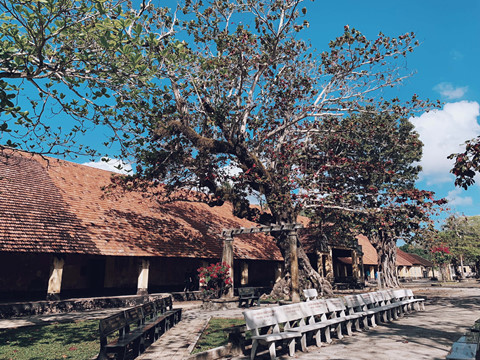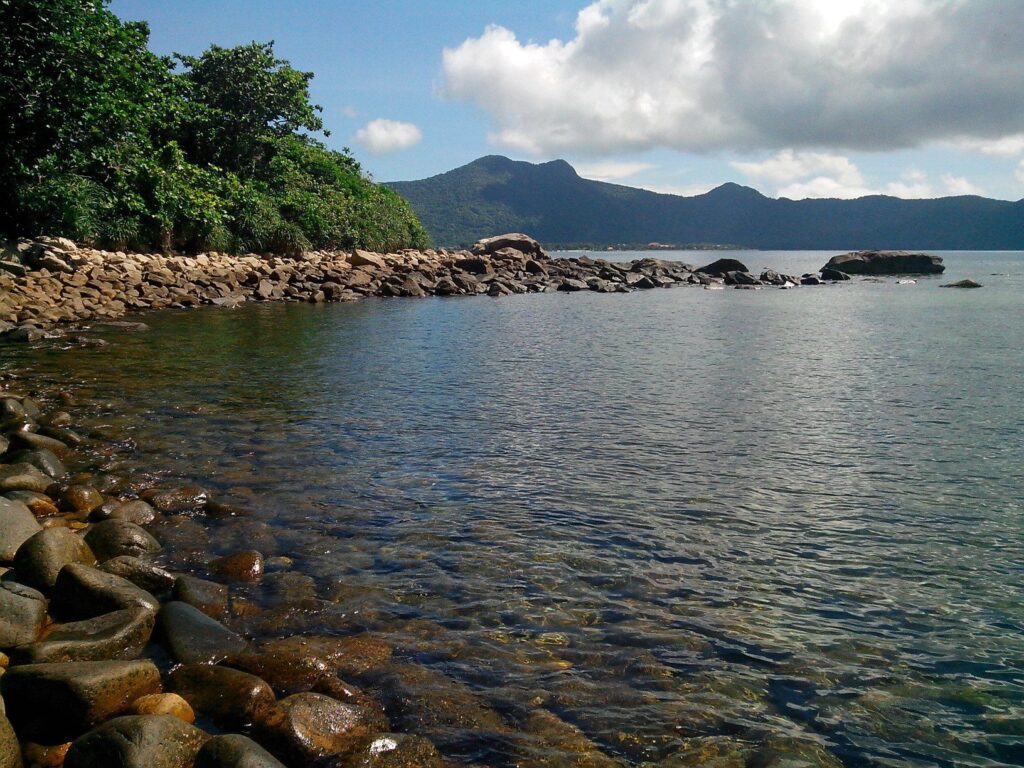The Côn Đảo prison system was built by the French to detain prisoners considered extremely dangerous to the colonial regime—political prisoners, revolutionaries, and death-row inmates. During the French colonial period, this was where many patriots and revolutionaries were imprisoned for resisting colonial rule. Later, the United States also used the prison to hold political prisoners during the Vietnam War.
Côn Đảo lies in the middle of the East Sea, along the East–West maritime route. As early as the 13th century, merchant ships from Italy, Spain, Portugal, England, and France had already anchored at the islands.
In 1857, France invaded Vietnam, seizing Gia Định (1859) and Định Tường (1861). Immediately after occupying Định Tường, the French hastily took control of Côn Đảo. To the colonial authorities, the archipelago was an ideal location for a prison: isolated by vast ocean waters, with no means of escape, completely cut off from the mainland. Prisoners detained here would lose all contact with family and society, making resistance nearly impossible. The French could apply any form of torture or repression without being detected by the outside world.
On 28 November 1861, Lieutenant Lespès, under orders from Admiral Bonard, commanded the warship Nogagaray to capture Côn Đảo. On 1 February 1862, Admiral Bonard officially established Côn Đảo Prison to detain convicts sentenced from one to ten years. Félix Roussel, Deputy Commander of the fleet, became the first governor of the archipelago and warden of the prison.
On 31 January 1873, Governor of Cochinchina Dupré issued a decree enforcing a special administrative code for the Côn Đảo penitentiary. After various amendments, the most complete version—20 chapters with 109 articles—was promulgated on 17 May 1916, and remained in effect until the collapse of French colonial rule in Indochina.
Expansion of the Prison System
During its first half-century, the prison consisted of only one facility: Bagne I (now Phú Hải Prison). With additional funding from the Indochina federal budget:
- Bagne II was built from 1917 and put into use in 1928
- Bagne III was completed in 1939
- Additional facilities, including French Tiger Cages, were operational by 1944
In 1955, Major Aloise Blanck formally handed the prison over to the Saigon government, marking the end of nearly a century of French atrocities on the islands.
The American–South Vietnamese Era
In the final 20 years of the prison’s existence, the U.S.–backed regime expanded the prison from 4 to 8 facilities:
- Camp V (built in 1962)
- Camps VI, VII, VIII built simultaneously in 1968 and completed in late 1970
- Funded by the MACCORD program (U.S. military & economic aid)
- Designed by American prison construction specialists and built by the U.S. contractor RMK–BRJ
- Camps IX and X were begun but abandoned in 1972 when RMK–BRJ withdrew from Vietnam
A Brutal Prison Empire
Over 113 years (1862–1975), the Côn Đảo prison system expanded to:
- 117 prison cells
- 44 solitary confinement cells
- 504 French-style Tiger Cage cells
- 18 labor camps (Sở tù)
The prisons included:
Phú Hải (Camp 2), Phú Sơn (Camp 3), Phú Thọ (Camp 1), Phú Tường (Camp 4), Phú Phong (Camp 5), Phú An (Camp 6), Phú Bình (Camp 7), Phú Hưng (Camp 8), the French Tiger Cages, and the Cow Shed isolation area.
Phú Hải, established in 1862 and reinforced in 1896, is the largest and oldest prison block in the Côn Đảo historical complex.
The 18 labor camps—Sở Lưới, Sở Ruộng, Stone Quarry, Wood Hauling, Cow Shed, Brick Kiln, Lime Kiln, Salt Works, Mechanical Workshop, Waste Treatment, An Hải Farm, Cỏ Ống, Hòa Ni, Bông Hồng, Ông Lớn Farm, Ông Đụng, Sanitation Unit, Đất Dốc—were created to force prisoners into exhausting hard labor, serving both the colonial administrative machinery and the daily operations of the prison island.








